Continued from previous posts….
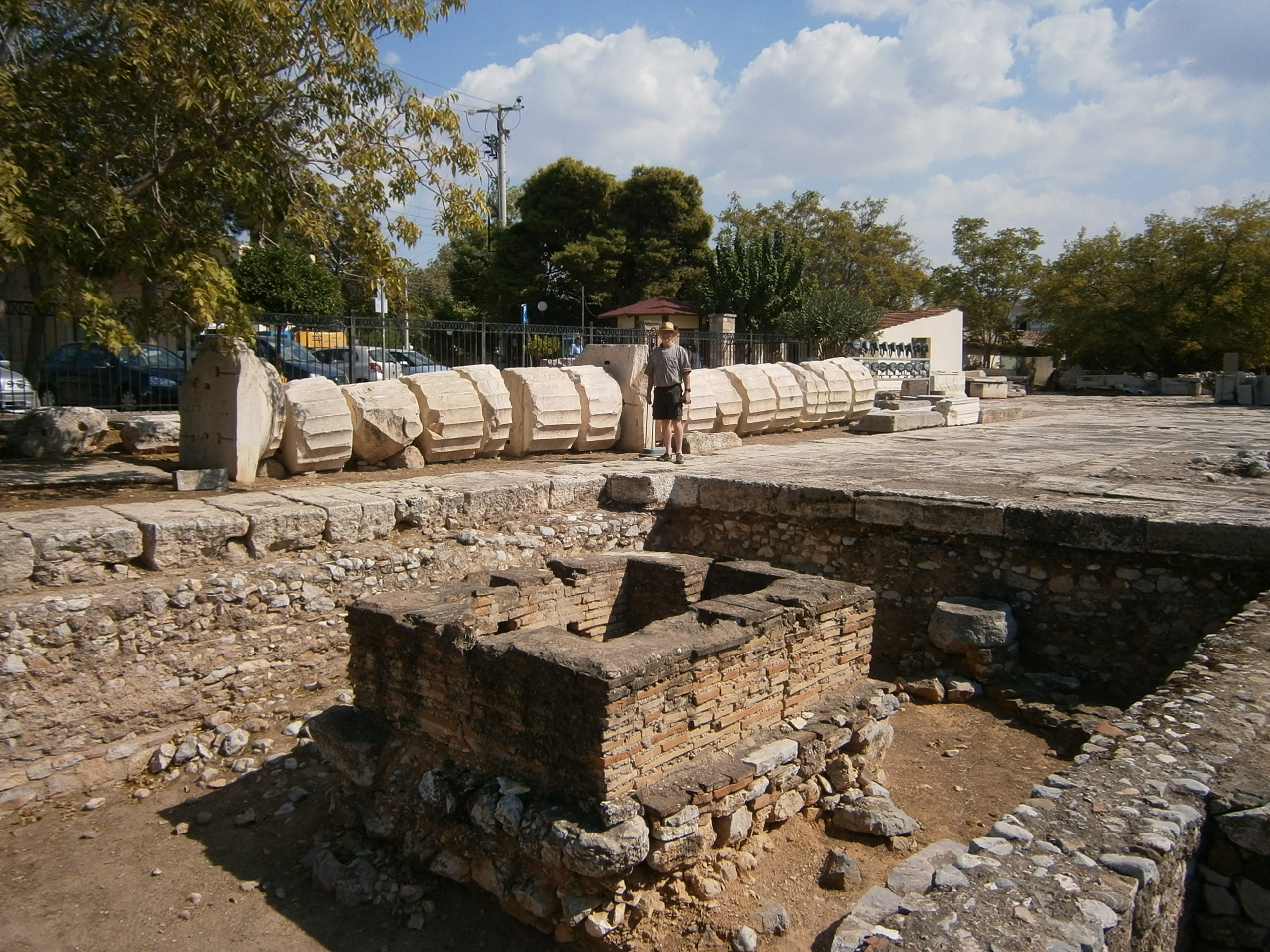
Towards the front of the site at Elefsina, before you even get to what’s left of the Great Propylaia there is what looks like a large, brick barbecue. And that is precisely what it is. Except it is unlikely that any living soul got to taste the meat that was cooked on it. It is an eschara, a sacrificial altar.
“But wait,” you say, “didn’t the Greeks get to eat most of the meat from their sacrifices?”
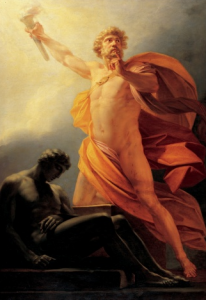
They did. According to Hesiod*, the Greeks had Prometheus to thank not only for fire, but also for the privilege of reserving the best cuts of the sacrificial animal for themselves. The story begins back in the mists of time, back before Prometheus had stolen the divine fire and given it to mortals, back when the gods still came down from Olympus to dine with humans. Prometheus was having his first meal with Zeus and took it upon himself to portion out the sacrificial bull. He, of course, gave the best meat to Zeus, but disguised it by wrapping it in fat and bone. He gave the mortals the remaining bones and gristle and skin, but he wrapped them in a lovely, fat-marbled slab of meat. Zeus looked at the portions and switched them. With his own hand, he gave his worshipers the best of the sacrifice. And so it has always been.
But this only applied to the Olympian deities. The Chthonic*** deities, spirits of the underworld, and the souls of the dead went by a different set of rules. They were present long before Zeus and the Olympians arrived in Greece, and their rites were somber and filled with dread. The ancient Greeks regarded them as malignant and dangerous, and so, like wayward college students, they only phoned home when they really, really needed something or as an act of appeasment. An offering to them was not a pleasant communion, it was a true sacrifice—the whole animal was burned to ashes on an eschara—and was called a holocaust (from the Greek word holókauston, which means “The whole animal, olos, completely burnt, kauston).**
These rituals were performed in the dark of night, with no wine to ease the nerves and parched throats of the celebrants. Only black animals were killed, as opposed to the white ones that the Olympians prefered.
The main deities worshipped at Eleusis were Chthonic. Hades and Persephone, the king and queen of the underworld definitely qualify. But Demeter, whom we tend to think of as a goddess of grain and poppies and sunlight is also an underworld deity, an earth goddess, worshiped at wells and caves. (see previous post) Any gardener knows that death, in the form of the compost pile, is essential for abundant crops. And she can be quite harsh. She nearly killed off the whole world as she grieved for her daughter.
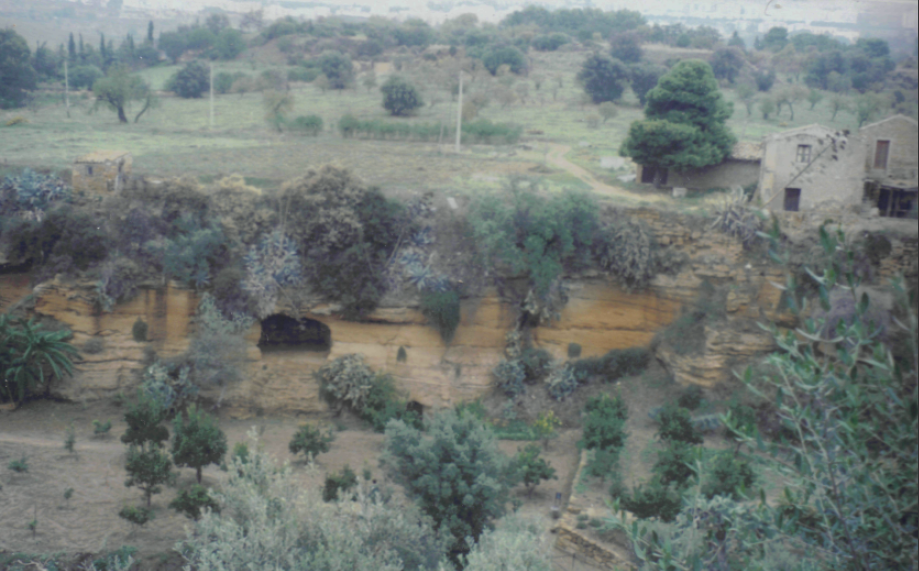
To make sure you don’t miss her chthonic connection, the Demeter caryatids of Eleusis wear a Gorgon’s head on their bodices.
And so, of course, there is an eschara at Eleusis.
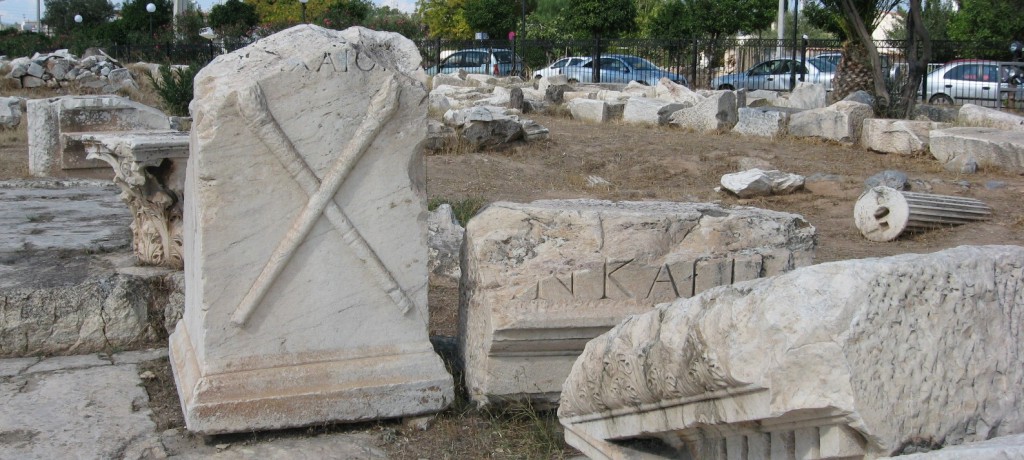
*Theogony, written by Hesiod, a Greek epic poet, in the 8th century BCE
**Prolegomena to the Study of Greek Religion, by Jane Ellen Harrison, Chapter II, The Anthesteria, The Ritual of Ghosts and Sprites
*** from Greek χθόνιος – chthonios, “in, under, or beneath the earth”, from χθών – chthōn “earth”; pertaining to the Earth; earthy; subterranean. Henry George Liddell, Robert Scott, A Greek–English Lexicon, at Perseus.


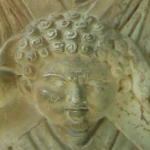
3 thoughts on “The Eschara and the Original Meaning of the Word Holocaust”
Goddess, I do love your writings, Chrissy! I learn SO much from you. Thanks!
I learn so much from them too!
Glad you’re enjoying them.
I miss you.
Hugs,
Chrissy
We didn’t just call home when we needed something or to make you happy. Making a good story better 😉